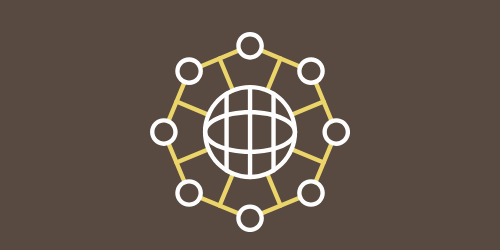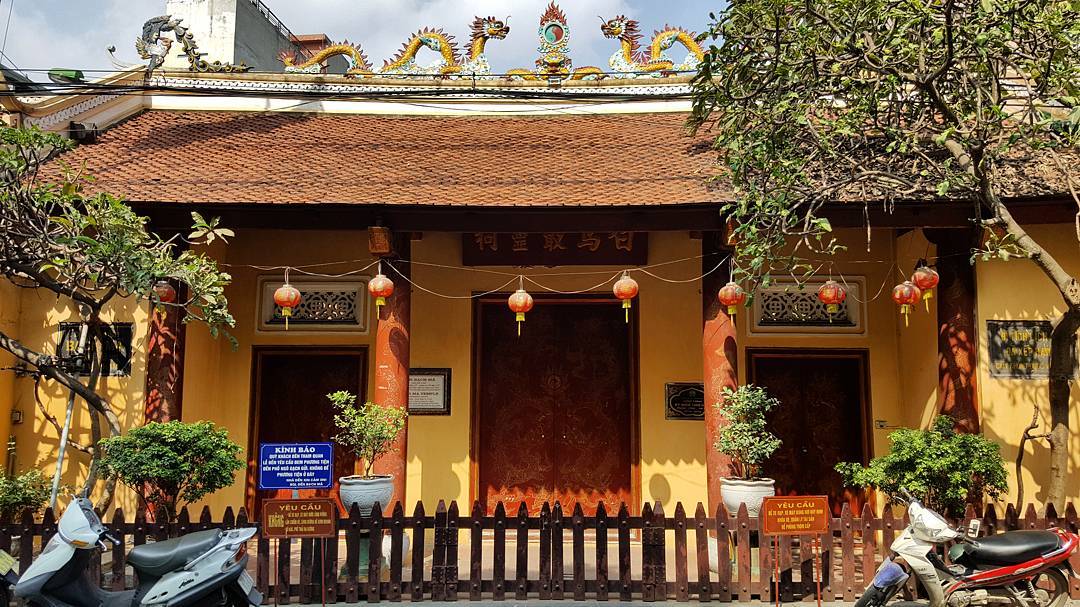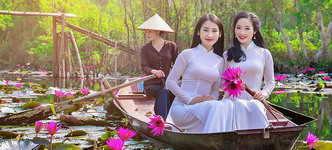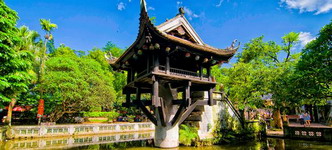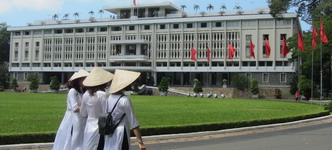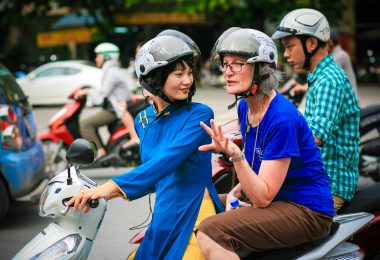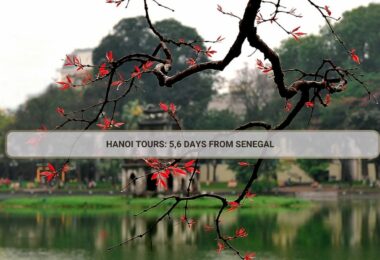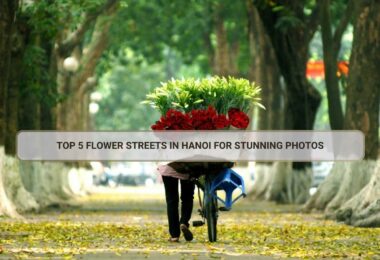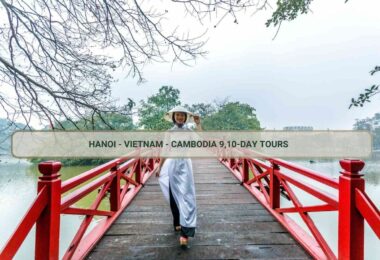1. Overview:
Bach Ma Temple (“Bach Ma Dark Spirit") is one of the four towns of the ancient Thang Long citadel, including four temples: Quan Thanh Temple (guarding the north of the citadel); Kim Lien Temple (guarding the south of the citadel); Voi Phuc Temple (guarding the west of the citadel); Bach Ma Temple (fortress in the East of the Citadel), is located at 76 Hang Buom Street, Hang Buom Ward, Hoan Kiem District, Hanoi.
2. History of Temple:
In the past, Bach Ma temple was located in the geographical area of Ha Khau ward, Dong Tho canton, Tho Xuong district, Hoai Duc ward, Thang Long.
Bach Ma Temple was built in the 9th century to worship Long Do (Dragon’s navel) – the original god of ancient Hanoi. In the 10th century, when sending troops to quell the rebellion, Dinh Bo Linh went to Bach Ma temple to the east of Dai La citadel to pray for the island to ask God to bless the country. Dinh Bo Linh went to Dang Xa village (Van Xa, Kim Bang, Ha Nam) to recruit troops, from there Dinh Bo Linh could not fight anywhere, and was honored as Van Thang Vuong, averaging 12 soldiers. After reunifying the country, and returning to Dang Xa village, King Dinh Tien Hoang dreamed of a god claiming to be Than Bach Ma, who reported in a dream that: "The god obeyed Hoang Thien’s orders and followed the king to fight the enemy. Now the world is at peace, but the king has not yet offered thanksgiving, so it is not the right ceremony". When the king woke up, he knew that God was very inspirational, so he bestowed a beautiful letter on him, ordained as Protectorate Canh Linh Thong The World, Do Dai Thanh Hoang Linh Lang Bach Ma Dai Vuong Supremely Phuc Than. Dinh Tien Hoang sent an emissary to bring Bach Ma god to Dang Xa commune, Co Bang district, Phu Ly Nhan, Dao Son Nam, instructing the people to build one more temple of Bach Ma god in the homeland of Queen Duong Thi Nguyet to worship, called Spirit Lang Bach Ma temple. In the Nguyen Dynasty, King Dong Khanh in the 9th year gave him the title: Ham Quang Thuong Dang Than, especially for worship, to remember the joy of the country and clearly show the sea of worship. Therefore, today in Ha Nam, there is also Bach Ma temple to worship the god in the capital of Thang Long.
In 1010, when Ly Thai To moved the capital from Hoa Lu to Thang Long, he intended to build the citadel, but many times the citadel collapsed. The king sent people to pray at the temple of Long Do god when he saw a white horse coming out from the temple. The king followed the horse’s footsteps, drew up a plan to build the city, and the new city stood firm. He was crowned by King Ly Thai To as the Emperor of Thang Long citadel.
The epitaph still in the temple says that Bach Ma temple was greatly renovated in the Chinh Hoa era (1680-1705) of Le Hy Tong’s reign, in the 20th year of Minh Menh (1839) it was restored again: repairing the temple, built its own document, built Phuong Dinh, the scale is increasingly spacious, the landscape is sacred and famous in the sacred land.
uả dịch
3. Architecture:
Currently, the temple has a large architectural scale, facing the South, including Nghi Mon, Phuong Dinh, Dai Bai, Burning incense, Forbidden Palace, and council house in the back. These items are arranged vertically, in a closed space. The remaining temple architecture today is mainly in the artistic style of the Nguyen Dynasty (19th century). Prominent in the architectural structure of the temple is the entire wooden house frame with a system of large ironwood columns, the roof support sets are made in the style of “gong racks stacked with two children", especially the “three-way system" at the temple. The communal house is both a force-bearing and a work of art and is used to hang lights during festivals and the “crab shell arch" structure supports the eaves of the incense burning house. On the wooden sticks, salads, crossbeams, and stacks, there are many decorative pieces with rich themes and strong and strong lines.
4. History:
According to the stele erected in the 36th year of Tu Duc (1883) at the temple, the temple has existed since the time when Vietnam was under the domination of the Tang Dynasty. At that time, the temple was a small shrine but very inspiring. In 1831 (the 12th Minh Mang), the provincial capital of Son Tay was established, gathering many officials and merchants, just 2km from the Va temple. To meet the religious needs, these people along with the people around the area have worked hard to build more 5-room ancestral houses. Up to now, the prefab house has undergone three major renovations: in 1829 (the 10th Minh Mang), the great building in 1902 (the 14th Thanh Thai), and again in 1932 (the 7th Bao Dai). According to feng shui theory, the hill has the shape of a turtle swimming towards the rising sun. The temple’s campus is about 2,000m² wide, surrounded by laterite walls over 2m high.
5. Architecture:
And Temple is built in the North-South direction, the temple door has wide three gates, the roof is covered with ancient tiles, on the top is embossed with the image of two dragons of the tide. Nghi Mon – the main gate of the temple, facing Tan Vien mountain (in Ba Vi district) consists of three compartments built on a high platform. Nghi Mon has three rows of wooden columns placed on a laterite millet. Adjacent to the subject, posted on both sides vertically is the bell tower and the drum attic with similar architecture with 8-roof match stacks modeled after the drum attic, the temple steeple, and the appearance of Khue Van Cac in Quoc Tu. Superintendent. The face of the temple courtyard is decorated with the theme of five blessings with the image of five bats spreading their wings embracing a round window. Mr. Phung Minh Son said: “The Temple of Va was designed with “domestic and foreign affairs", so the temple is the main place of worship. Thuong temple, Ha temple, Trung temple are still worshiping hope. And inside the temple is to worship the Tam Tam Tan Vien Son and Mau Mother, then to the communal council, the four royal pillars, and the mandarins. In addition, there are bureaucrats, martial arts officials, and other mandarins. It is meant to represent an ancient country. Only in the And Temple is to show this through the “internal and external" architecture.
6. Interiors:
In the interior of the temple, the communal house is inside, the left side has an incense tree, the altar, the outside has a shrine to worship Te Vuong Phi, and the right side of the communal house worships Be Nui. Burning incense and forbidden palace with altars and sacrifices.
At present, the temple still preserves many valuable ancient relics such as stele, ordination, palanquin, worshiping crane, and double phoenix. Along with architectural and artistic values, the relics of Bach Ma temple is a source of documentation. valuable to study and learn about Thang Long-Hanoi in many aspects.
With more than a thousand years of history, Bach Ma Temple is one of the typical architectural and artistic monuments of the Hanoi capital.
6. Event:
Time of Bach Ma Temple Festival: February 12 – February 13 of the lunar calendar every year.
7. Tours:
